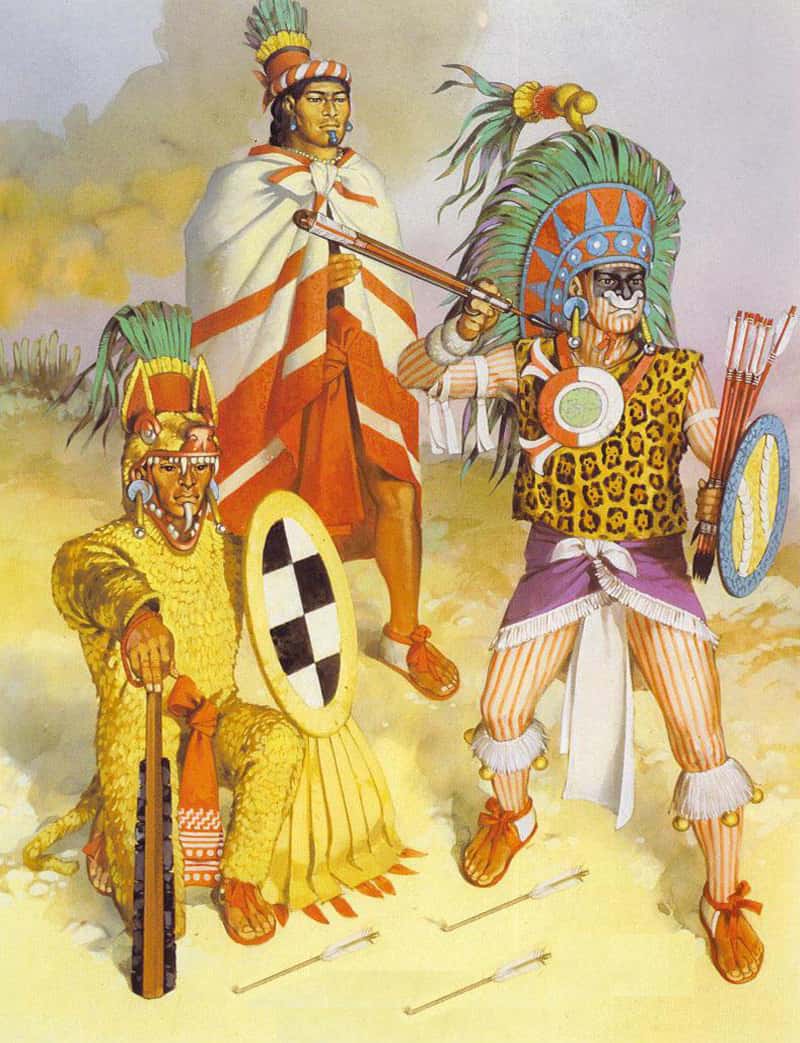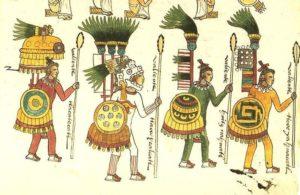The Origins of the Mexican Army in the Pre-Hispanic Era
War was common in pre-Hispanic settlements, war was part of the organization for the defense and domination over other societies; such activity was at its peak during the post-classic period (approximately between 900 and 1521), a process immediately after the Conquest of Mexico-Tenochtitlan.

The development of war activities was common in pre-Hispanic settlements, war was part of the organization for the defense and domination over other societies; this activity had its greatest peak during the post-classic horizon (located approximately between 900 to 1521), a process immediately after the Conquest of Mexico-Tenochtitlan.
During this stage, different militarily dominant cultures coexisted, such as the Toltecs, one of the most important groups in Mesoamerica, whose headquarters was located in the city of Tula, Hidalgo. Another of the most influential settlements was the Mixtec Culture, a region divided into independent lordships that are currently located in the northeast of the state of Oaxaca, part of the southwest of the state of Puebla, and towards the northeast of the state of Guerrero.
Among other cultures that were less preponderant in the warlike conflicts in comparison with the fully militarized societies mentioned above were the Purépecha, Huasteca, and Zapoteca.
Among all the settlements and lordships coexisting in the postclassic horizon, the Mexica Culture excelled in military aspects as a result of the alliance of the ruling lordships of Tenochtitlan (Tenochtitlan), Texcoco (Tzcoatl), and Tacuba (Cuauhtlatoa) in the Triple Alliance or the so-called Confederation of Anahuac that covered practically the entire central lake region, which gave rise to the Mexica Army.
This organization implemented a primarily belligerent and hierarchical system, where the Tlacatecatl was in charge of the control of trade, construction of defensive works, instruction, and military operations, while the Tlacatecuhtli was responsible for services, supply, and administration.
The calpulli (group of families with a common organization or government) were under the orders of a Tiachcahuan and/or a Calpoleque, also the priests known as huitznahuatl and ticocyahuacatl participated in the war since they carried effigies of their deities to the battle.
For the instruction and conduct of the war, two educational centers were established for the training of rulers and warriors: The Tepochcalli where the young men of the town, starting at the age of 15, were trained to serve in the war and the Calmécac where the sons of the nobles received knowledge related to the forms of organization of the governments and the doctrines on the conduct of the war.

The elite warriors occupied a hierarchical position in the army that depended on the military exploits obtained throughout their lives in the Florid Wars (xochiyáoyotl) as a result of the capture of their enemies of the same or higher rank for sacrifices.
The distinction of the warriors was represented in the uniforms and insignias that they wore according to their hierarchy, these were cotton garments and from the Tequiha hierarchy, they wore a plume, shield, and half-moons among other distinctions that they acquired with each rank or distinction, an example of this were the eagle warriors (Cuahtli) and lion warrior (Mixtli), among others.
The hierarchies of the pre-Hispanic warriors were obtained based on the capture of war enemies.
The weaponry used by the warriors was divided into two aspects; offensive and defensive weaponry:
Offensive weaponry consisted of macanas (Macahuitl), mallets or clubs (Cuahoholilli), arrows (Mitli), spears with obsidian tips (Tapuztopilli), darts (Tlacochitli), and shuttles (Atlatl) and was mainly used by lancers and archers on foot as it would currently be equated to a kind of light infantry.
While the defensive armament was mainly for body protection, it consisted of a helmet (Cuatepoztli), breastplate (Ichacahuilli), a shield (Chimali), and in some cases sandals (Cactli) according to their hierarchy.
Source: SEDENA




